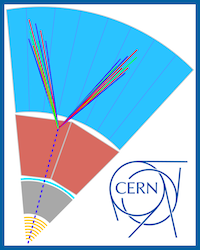Conveners
Heavy neutral leptons
- Lisa Benato (Hamburg University (DE))
- Albert De Roeck (CERN)
Heavy neutral leptons
- Albert De Roeck (CERN)
- Audrey Katherine Kvam (University of Massachusetts (US))
In the framework of the low-energy effective field theory of the Standard Model extended with heavy neutral leptons (HNLs), we calculate the production rates of HNLs from meson decays triggered by dimension-six operators. We consider both lepton-number-conserving and lepton-number-violating four-fermion operators involving a pair of HNLs. Assuming that HNLs are long-lived, we perform...
The sensitivity of direct searches for heavy neutral leptons (HNLs) in accelerator-based experiments depends strongly on the particles properties. Commonly used benchmark scenarios are important to ensure comparability and consistency between experimental searches, re-interpretations, and sensitivity studies at different facilities. In models where the HNLs are primarily produced and decay...
Collider testable seesaw models predict pseudo-Dirac heavy neutral leptons. These almost mass degenerate pairs of heavy Majorana neutrinos can oscillate between neutrino and anti-neutrino eigenstates. Exploiting long-lived decay signatures, such oscillations can be observed in a modulation between lepton number conserving and violating processes. I present a minimal model capturing the...
The neutrino dipole portal adds a Heavy Neutral Lepton (HNL) coupled to active neutrinos via dipole-like interactions with Standard model electroweak gauge fields. Motivated by the unsolved MiniBooNE, ANITA, and muon g-2 anomalies, the dipole portal provides an alternative way to test the existence of HNLs compared to the minimal model, where HNLs mix with active neutrinos. In this talk, we...
We consider the minimal see-saw extension of the Standard Model with two right-handed singlet fermions $N_{1,2}$ with mass at the GeV scale, augmented by an effective dipole operator between the sterile states. We firstly review current bounds on this effective interaction from fixed-target and collider experiments as well as from astrophysical and cosmological observations. We then highlight...
